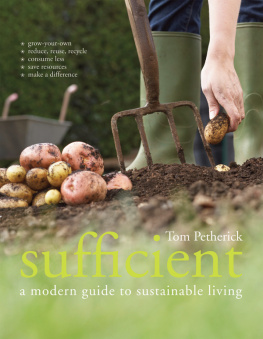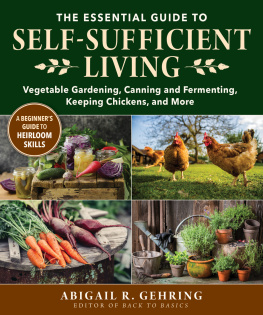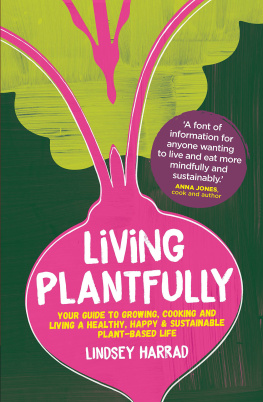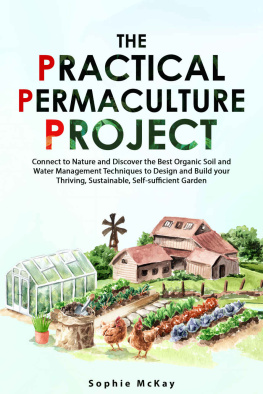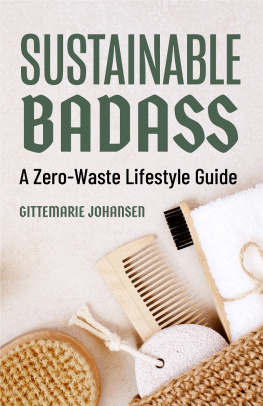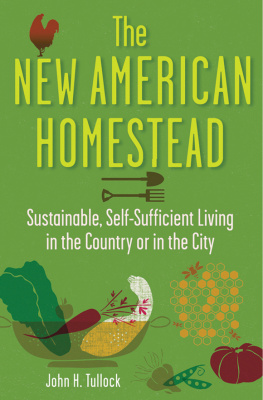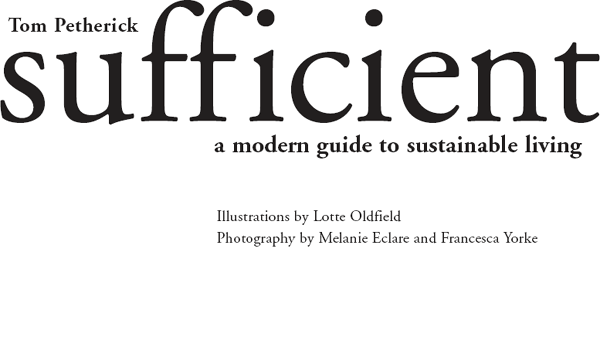sufficient

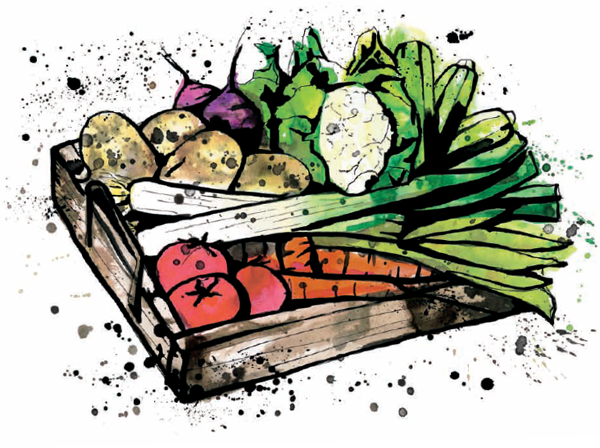

For Melanie, with love.
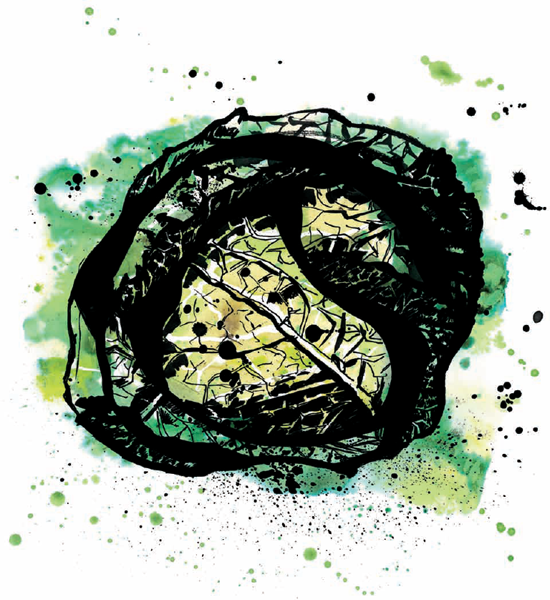
contents

INTRODUCTION
Most of us have enough. The title of this book is designed to make us look at the word sufficient in two ways. It asks firstly that we become more sufficient and responsible for our levels of consumption and secondly that we change to a more self-reliant way of living. It is about making the best possible use of our resources and potential, about an understanding that, amongst other things, working the land whilst appreciating nature is rewarding; it is a book about feeling satisfied with what we have in short, sufficient.
No one can doubt that we live in an era of mass overconsumption. This book has at its core the need for us in the developed world to accept that we need to make very significant changes. So comfortable have we become in the ways of convenience that sometimes it appears we cannot manage any other way, with the result that we consume even more.
This then presents an opportunity to look how we can become more self-reliant, particularly on the home-production front. There is little point in lingering on how badly wrong things have gone the question is what we can do to effect change for ourselves and our community around us and even the greater community, the planet. The world we live in is a staggering place, filled with wonder and beauty. Nature provides in such extraordinary abundance that it is at times jaw-dropping. This will not disappear overnight, but there is much to do. We are at the beginning of an exciting time when our true worth will come to the fore.
Whilst trying not to lecture, I do feel the need to urge a sense of responsibility in our actions indeed the word sufficient reflects the willpower to say, Thats enough. By being comfortable with sufficient, we set an example, a political example that can only lead to action on the part of many. For years, I have been advocating the benefits of growing organic vegetables and I was a certified commercial organic grower, producing crop for market. I have watched carefully the way in which attitudes have slowly begun to change, not just in the realm of food but in an awareness of all things environmental. The media tells us that we are at a crossroads, a turning point, that a paradigm shift is imminent. But most of us dont need any telling; we know, and we know that now is the time to act like never before.
I hope that this book will guide and encourage. It is largely based on my own experiences certainly on the growing front and it is a privilege to be given the chance to write about things as I see them and have experienced them. I have not provided an exhaustive catalogue of every crop or every technique, but have chosen those that I enjoy growing and eating, or which suit the sufficient way of being. Naturally, readers will experience things differently in the course of their own gardening or growing lifetimes.
From a young age, I always preferred to be outdoors rather than in. My mother taught me to garden and also encouraged an interest in ornithology. My mother took my brother and I bird-watching to the wetlands of Norfolk to see avocets and stare out over the wide East Anglian skies. A reverence for nature was encouraged by my parents and has stayed with me throughout my adult life. We also had a vegetable patch in our garden and a large compost heap where Dad put the lawn mowings and raked up autumn leaves and Mum deposited the kitchen scraps. I remember the heat and the thick smell of compost, and I love the smell to this day. It is the bedrock of all gardening.
Today, more and more of us seem to be afraid of outdoors. It is an unfamiliar place dominated by that appalling variable weather. Either too hot or too cold, most of the time wet, it never seems to suit us and prevents us from seeing outdoors for what it really is life. The life of the air, the rain, the clouds and the ground beneath our feet. All of it is filled with life, and failure to embrace it is a terrible waste. It is where our food and the air we breathe comes from; without it, we are bereft of any connection to life.
Curiously, we spend a huge amount of time complaining that outdoors is becoming subsumed under a mass of roads and new housing developments whilst at the same time failing to make the best use of the outdoor space we have, from our wonderful National Parks to our back gardens. Most of the time we are staring our most precious resource in the face that little patch outside the front door where this embracing of life and the natural world can actually begin.
Most of us have something that resembles a garden, or at least some access to outdoor growing space, even if it is just a balcony or a windowsill. Something as simple as growing radish from seed in a container can make the difference and encourage a new way of thinking. To connect with nature is the first step on the path of sufficient. Long before I started to grow things, the bird table and the nut feeder were a source of endless fascination. The cycles of life and the seasons soon followed. Then came the soil and what it could provide.
When I was a young child in the 1960s, an attitude of sufficient particularly towards food was prevalent in our family. Perhaps it was the legacy of my parents being children during the war years and experiencing food rationing first-hand, or it simply may have been the attitude of their generation and the fact that ready meals were not available. If there was a cake needed, it got baked. We keep hearing today about the importance of returning to seasonal and local eating, but back then there was not much choice. It was all seasonal. Vegetables for city dwellers came largely from the market garden industry around London and fruit from Kent. How can it be that in only 40 years there has been such a decline in food production in the UK? The information age combined with cheap travel and changing tastes brought us a whole new world, and before we knew it the greengrocer was replaced by the supermarket. Most of this passed my family by; we grew a lot of what we ate, meat came from the butcher and it was only bananas and oranges that could be termed as exotics.
In 1976, amidst all this, John Seymours book Self Sufficiency was published and came into our house. At a stroke, all that I thought was great about outside was suddenly OK. Seymours classic became my bedside reading and subject for fantasy. Even the Joy of Sex, by Alex Comfort (same brown drawings and beards, though totally illicit reading) could not compete with Self Sufficiency, which was for me the life-changing book. I was utterly gripped, yearning only for that one-acre holding with all that it promised.
My first career after school was in horse racing, during which time I worked for trainers and stud men in the wide open sweeps of East Anglia, Wiltshire and Ireland. I found these wonderful landscapes impersonal, daunting even. The only contact between man and soil came through the use of huge machines. I yearned to see people growing crops and producing food in a way that I could understand and relate to. I started gardening properly myself when I was 20, but it was not until I was 27 that I finally enrolled to study at horticultural college to take the business of growing seriously and learn a trade that had fascinated me since childhood.

